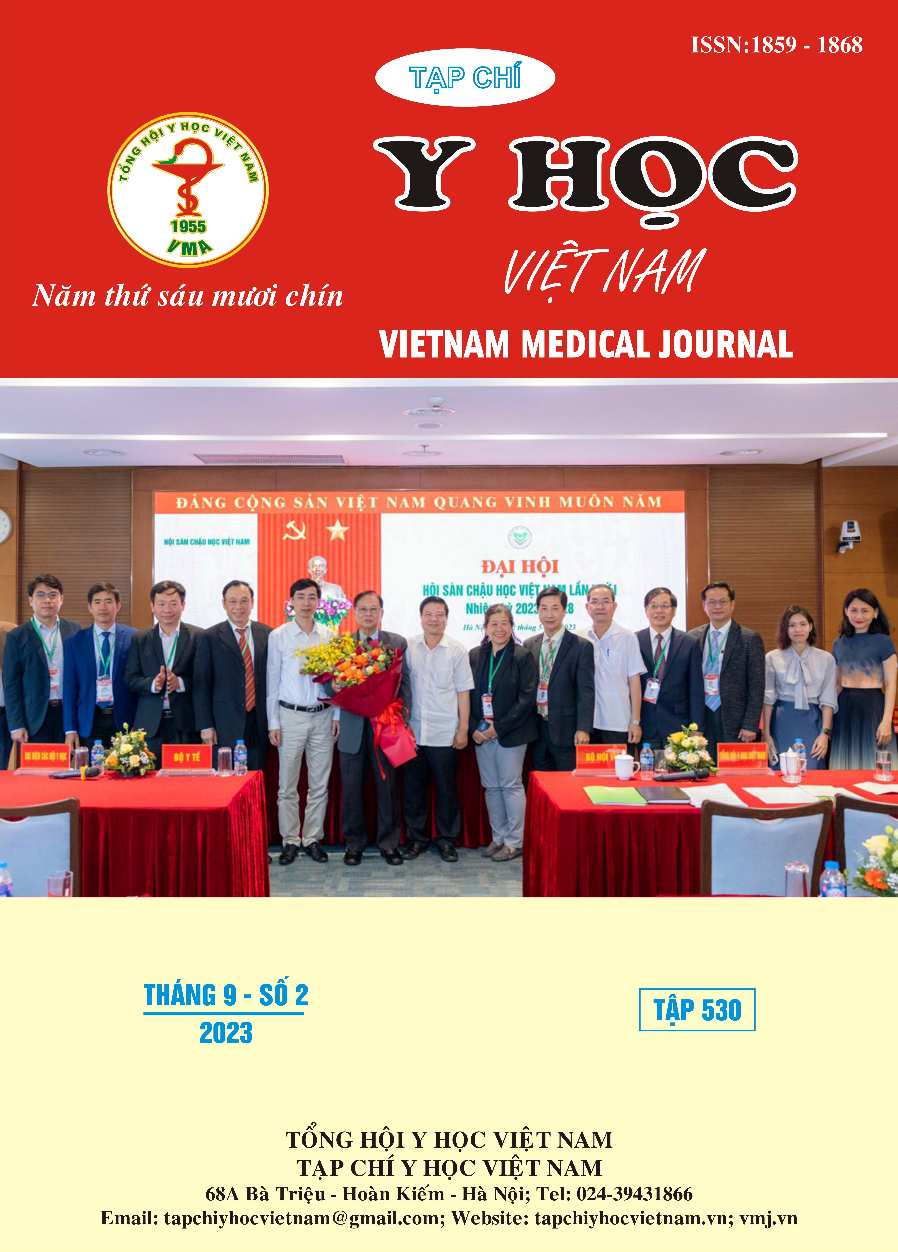AN ASSESSMENT OF KNOWLEDGE, ATTITUDE AND BEHAVIOR OF THE PARENTS HAVING CHILDREN WITH REFRACTIVE ERRORS AT THE VIETNAM NATIONAL EYE HOSPITAL IN 2022
Main Article Content
Abstract
Objectives: To evaluate knowledge, attitudes and behaviors of parents having children with refractive errors. Research method: cross-sectional descriptive statistics. Results: A sample of 336 surveyed parents has an average age of 38,6±6,0, 68,7% of the sample are female; the ratios of the parents living in urban areas are 44,0%; the shares of the parents having education levels of university - college and high school are 31,5% and 30,7%, respectively. Regarding knowledge, 58,0% of the sample are not at a good level; 59,8% of the parents don’t know complications of refractive errors; 72,6% of the parents don’t know that obesity and improper nutrition are risk factors of refractive errors, 50,6% of the parents think that taking medication can cure refractive errors. Regarding attitude, 11,6% of the parents are not at good level, 42,3% of the parents are concerned that wearing glasses can make refractive errors worse. Regarding behavior, 57,7% of the parents are at not good level, 26,8% of the parents give their children to take an eye exam at least once a year. The parents’ knowledge, attitude and behavior of parents have a positive correlation. Conclusion: The parents have good knowledge about refractive errors accounting for 42.0%. Parents with a good attitude about refractive error is 88.4%; 42.3% of parents are concerned that regular glasses can increase refractive error. The behavior of young parents on prevention of refractive errors is 42.3%. The group of young parents with good knowledge about refractive errors have better attitudes and behaviors to prevent refractive errors.
Article Details
Keywords
refractive error, knowledge, attitude, behavior, parents.
References
2. Nguyễn Hữu Lê (2020), “Can thiệp truyền thông nâng cao ý thức và thực hành của cha mẹ về phòng chống tật khúc xạ cho học sinh tiểu học tại trường tiểu học Hà Huy Tập II, thành phố Vinh, Nghệ An”, Luận án Tiến sĩ Y tế công cộng, Trường Đại Học Y Tế Công Cộng, 40-69, 111.
3. Lê Thị Thanh Xuyên và cộng sự (2009), “Khảo sát tỷ lệ tật khúc xạ và kiến thức, thái độ, hành vi của học sinh, cha mẹ học sinh và giáo viên về tật khúc xạ tại TP Hồ Chí Minh”, Tạp chí Y học thành phố Hồ Chí Minh, 13(1), 13-25.
4. Armarnik S et al (2021), The relationship between education levels, lifestyle, and religion regarding the prevalence of myopia in Israel, BMC Ophthalmol, 21(1), 136
5. Naidoo KS et al (2016), “Global Vision Impairment and Blindness Due to Uncorrected Refractive Error”, 1990-2010. Optom Vis Sci, 93(3), 227-234.
6. Pararajasegaram (1999), VISION 2020-the right to sight: from strategies to action, Am J Ophthalmol, 128(3), 359-360.
7. Donaldson L et al (2018), Eye care in young children: a parent survey exploring access and barriers, Clin Exp Optom, 101(4), 521-526.
8. Zhou S et al (2017), Association between parents' attitudes and behaviors toward children's visual care and myopia risk in school-aged children, Medicine (Baltimore), 96(52), e9270.


